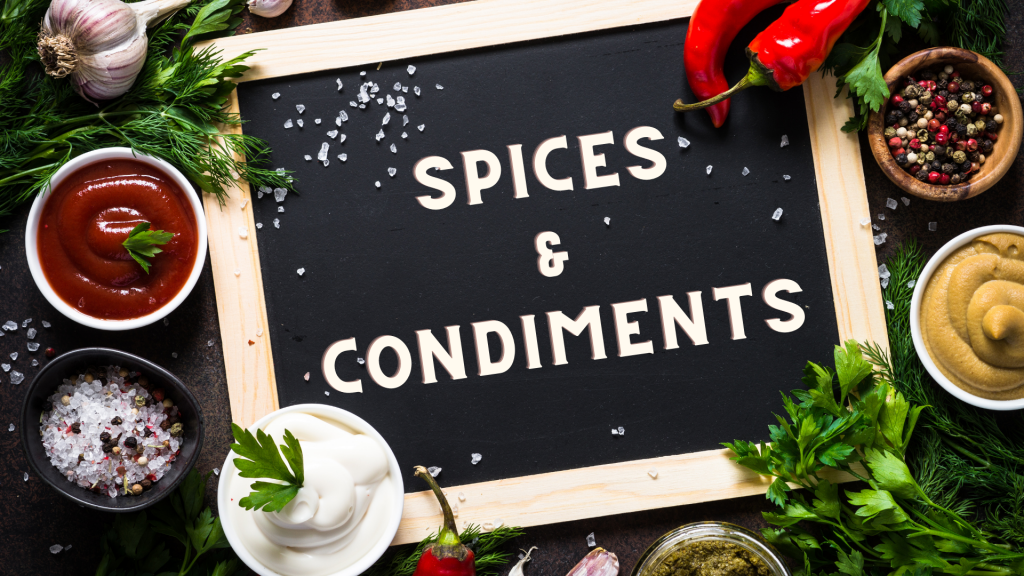Spices, herbs, and seasonings can make or break a dish. While some are traditional go-tops, others are lesser-known in kitchens around the world. If you want to take your cooking skills to the next level, it’s important to have these basics in your pantry or spice rack.
Spices add so much flavour to food. If you’re just getting started in the kitchen, spices are your first exposure to how to season food.
The beginners are very useful. First of all, they are easy to cook, and you can use them in lots of dishes. Maybe you are thinking that these condiments and spices are boring. But you should change your mind. Let’s see what you can learn using one of these condiments and spices.
The basic spices are cumin, cinnamon, paprika, turmeric, and chili powder. These spices are used in a lot of savoury recipes, but they add great flavour to desserts as well.
Cumin
Spices and seasonings are a big part of cooking, and cumin, one of the key spices, is one of those ingredients in nearly every dish. Cumin, a member of the parsley family, is a spice with a cumin-like flavor and adds a mild, slightly bitter taste and aroma. The spice is well known for its medicinal properties, and its seeds have been used medicinally for thousands of years.
Cinnamon
Cinnamon actually has emerged as one of the world’s healthiest foods, thanks to its many health benefits. Cinnamon is one of the best alternatives to processed sugar, and it can help lessen your risk of diabetes. Cinnamon also may help with weight loss, help improve blood sugar control, and can help people with arthritis.
Paprika
Paprika comes in varying colours, including red, green, and orange. Red and orange paprika have a bit of cayenne pepper in them, which makes them hotter than their green counterparts.
Turmeric
Turmeric is a hot spice, and it’s really good for you. The spice, which is commonly used in Indian and Thai curries, is a powerful antioxidant and has anti-inflammatory properties. It’s also high in manganese, folate, vitamin B6, and dietary fiber. Other health benefits include relief for osteoarthritis and rheumatoid arthritis, and it’s even been found to be effective as a treatment for cancer.
Chili powder
Chili powder is made from dried chili peppers. The peppers used in chili powders can vary in heat, from mild to very hot. Chili powder can be ground from whole dried peppers, but usually, it’s ground from fresh or dried cayenne peppers. Chili powder is often added to soups, chili, stews, chili con carne, and many other recipes. It’s typically used as a pepper flavour, so it’s used sparingly.
Oil
Oil works as an extension of our fingertips when cooking. It works as a sealant, a lubricant, and as an adhesive. Oil is at the center of many recipes; it’s used for dressings, sauces, and as an ingredient.
Vinegar/Soy Sauce
Vinegar and soy sauce might seem unlikely first condiments for beginner cooks, but they work quite well together, especially when paired with simple, flavourful proteins.
Ketchup
Ketchup, condiments, sauce, salsa, whatever you want to call it, this tangy, sweet tomato condiment is a staple in kitchens all over the world.
Chili Paste
Chili pastes are great for people who are just starting to explore different dishes from around the world. Chili pastes add an exotic touch to traditional dishes such as pho and are also great for creating Thai curries, Mexican salsas, and Creole jambalayas.
Mayonnaise
Mayonnaise: Everyone has their own opinion about the French dressing-like staple, but mayonnaise is the ideal condiment to start making for beginner cooks. It’s versatile, easy to make, and incredibly tasty. Mayonnaise’s versatility makes it great for dipping, topping or slathering on a sandwich or burger. Mayonnaise is also healthy for you, since it’s made with mostly egg, oil, and vinegar, making it a low-calorie, low-fat condiment.
The ingredients of a meal are as important as the ingredients that make up a recipe. Foods that are bland often taste better, whereas foods that are packed with flavour can take a while to get used to. Some foods, like spicy foods, are known to cause an inflammation reaction in some people, while others, such as fatty foods, can make a person feel full quicker and longer. If you’re interested in trying out new foods, but can’t stand the idea of biting into a raw onion, try using fresh herbs and spices instead.

